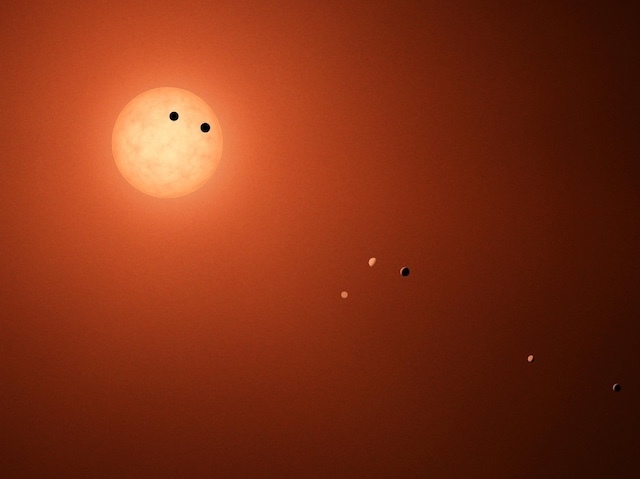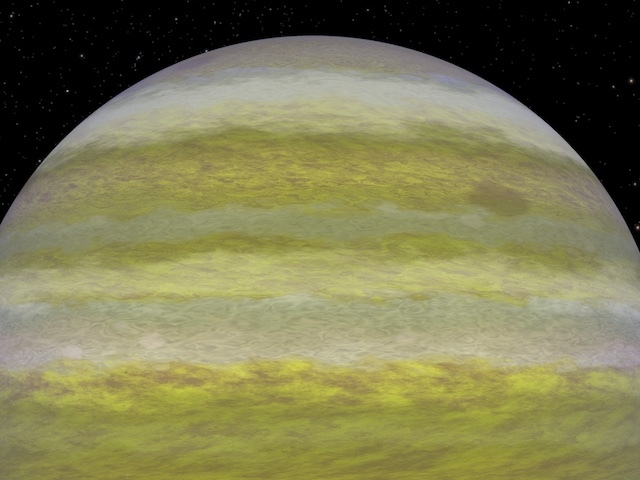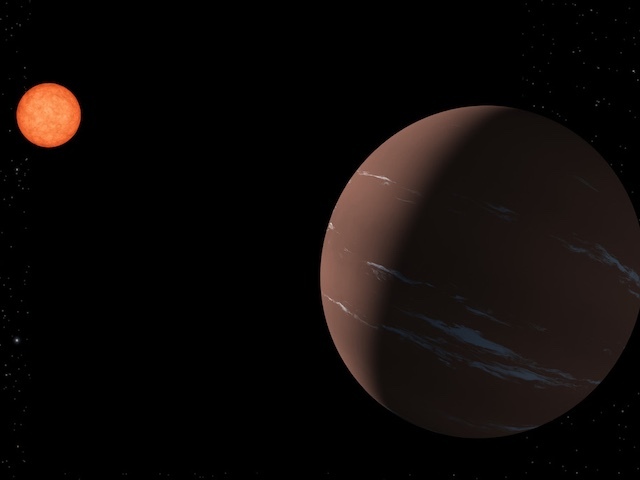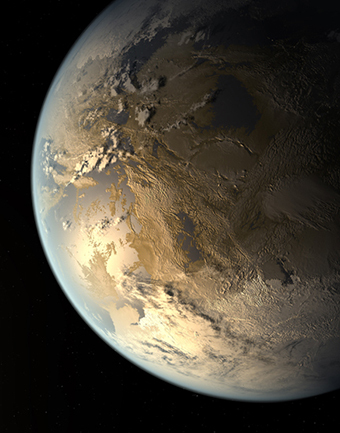News | April 9, 2019
What Is a Black Hole?
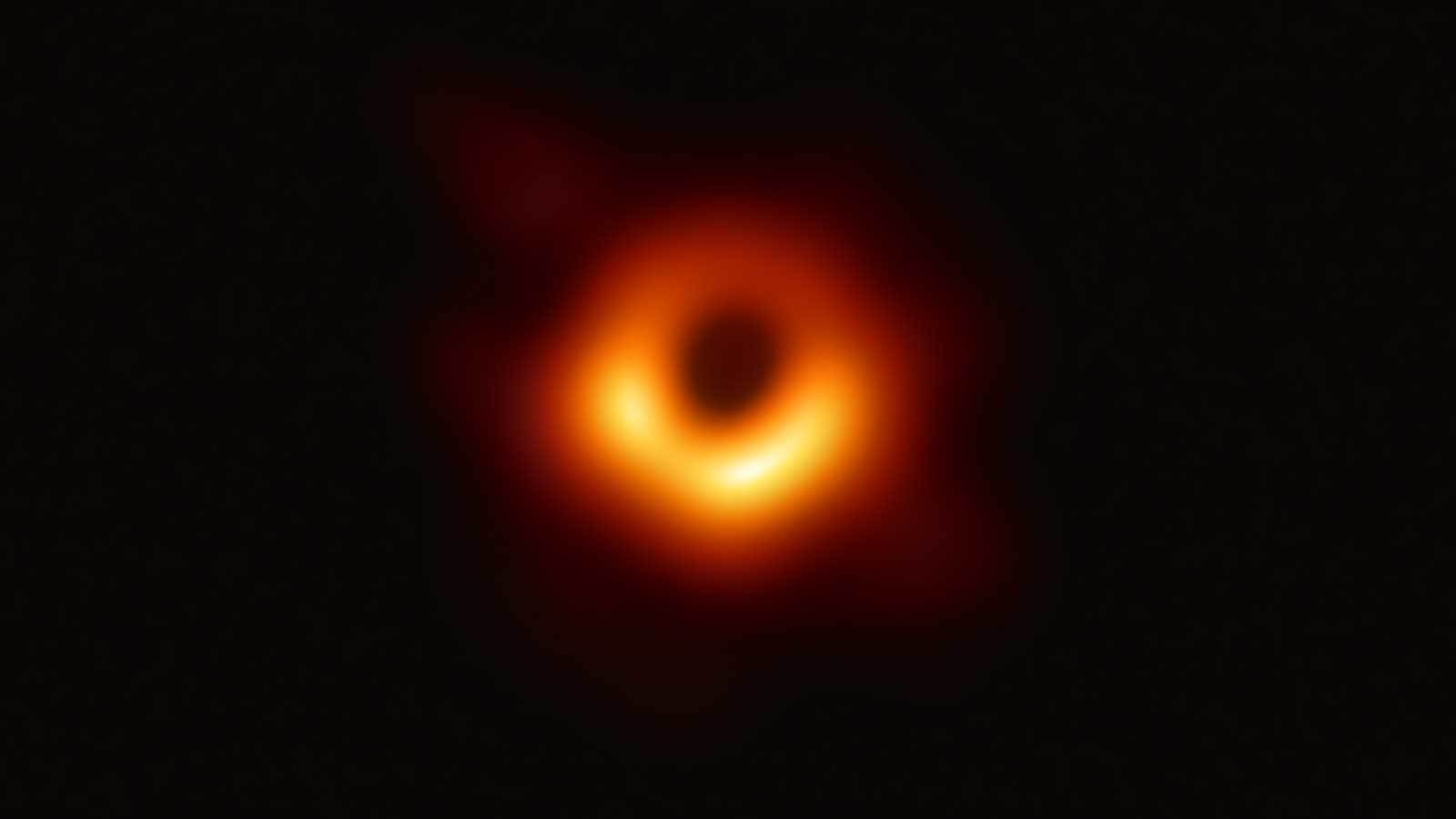
Using the Event Horizon Telescope, scientists obtained an image of the black hole at the center of galaxy M87, outlined by emission from hot gas swirling around it under the influence of strong gravity near its event horizon. Credit: Event Horizon Telescope collaboration et al.
What Is It?
A black hole and its shadow were captured in an image for the first time (2019) in a historic feat by an international network of radio telescopes called the Event Horizon Telescope (EHT). EHT is an international collaboration whose support in the U.S. includes the National Science Foundation. The EHT image relied on light in radio wavelengths and shows the black hole's shadow against the backdrop of high-energy material around it.
A black hole is a dense, compact object whose gravitational pull is so strong that – within a certain distance of it – nothing can escape, not even light. Black holes are thought to result from the collapse of very massive stars at the ends of their evolution. The gravity is so strong because matter (the mass) has been squeezed into a tiny space.
To complement the EHT findings, several NASA spacecraft were part of a large effort, coordinated by the EHT’s Multiwavelength Working Group, to observe the black hole using different wavelengths of light. As part of this effort, NASA’s Chandra X-ray Observatory, Nuclear Spectroscopic Telescope Array (NuSTAR) and Neil Gehrels SwiftObservatory space telescope missions, all attuned to different varieties of X-ray light, turned their gaze to the M87 black hole around the same time as the Event Horizon Telescope in April 2017.
A black hole does not have a surface in the usual sense of the word. There is simply a region, or boundary, in space around a black hole beyond which we cannot see. This boundary is called the "event horizon." Anything that comes within a black hole’s event horizon would be consumed because of the black hole’s unimaginably strong gravity. Stellar black holes have the mass of a dozen or so suns, but supermassive black holes, like the one first imaged by EHT, have the mass of many millions of suns.
If a star has three times or more the core mass of our Sun and collapses, it can form a black hole. Black holes are found across the universe – within double star systems and at the centers of galaxies where giant black holes grow. X-ray telescopes like Chandra can see superheated matter that is swirling toward the event horizon of a black hole. Chandra has revealed how black holes impact their environments, how they behave and their role in helping shape the evolution of the cosmos.
But ... Would You Fall in?
Not all the matter around a black hole is doomed to fall in. For example, in many black hole systems, some of the gas escapes as a hot wind that is blown away from the disk at high speeds.
Could a Black Hole Destroy Earth?
Black holes follow the laws of gravity just like other objects in space. The orbit of a black hole would have to be very close to the solar system to affect Earth, which is not likely.
If a black hole with the same mass as the Sun were to replace the Sun, Earth would not fall in. The black hole with the same mass as the Sun would keep the same gravity. The planets would still orbit the black hole as they orbit the Sun now.
Tour the Galaxy from a Black Hole
An immersive, ultra-high-definition visualization of the center of the Milky Way galaxy offers a tour from the vantage point of the central supermassive black hole, in any direction.
By combining NASA Ames supercomputer simulations with data from NASA's Chandra X-ray Observatory, this visualization provides a new perspective of what is happening in and around the center of the Milky Way. It shows the effects of dozens of massive stellar giants with fierce winds blowing off their surfaces in the region a few light years away from the supermassive black hole known as Sagittarius A* (Sgr A* for short).
The Most Distant Black Hole
Like more than two-thirds of the known galaxies, the Milky Way has a spiral shape. At the center of the spiral, a lot of energy and, occasionally, vivid flares are being generated. Based on the immense gravity that would be required to explain the movement of stars and the energy expelled, the astronomers conclude that the center of the Milky Way is a supermassive black hole.
In 2017, scientists uncovered a rare relic from the early universe: the farthest known supermassive black hole. This matter-eating beast is 800 million times the mass of our Sun, which is astonishingly large for its young age; it took more than 13 billion years for its light to reach us on Earth.
The black hole is voraciously devouring material at the center of a galaxy – a phenomenon called a quasar. This quasar is especially interesting because it comes from a time when the universe was just beginning to emerge from its dark ages. The discovery will provide fundamental information about the universe when it was only 5 percent of its current age.
The universe began in a hot soup of particles that rapidly spread apart in a period called inflation. About 400,000 years after the Big Bang, these particles cooled and coalesced into neutral hydrogen gas. But the universe stayed dark, without any luminous sources, until gravity condensed matter into the first stars and galaxies. The energy released by these ancient galaxies caused the neutral hydrogen to get excited and ionize, or lose an electron. The gas has remained in that state since that time. Once the universe became reionzed, photons could travel freely throughout space. This is the point at which the universe became transparent to light.


